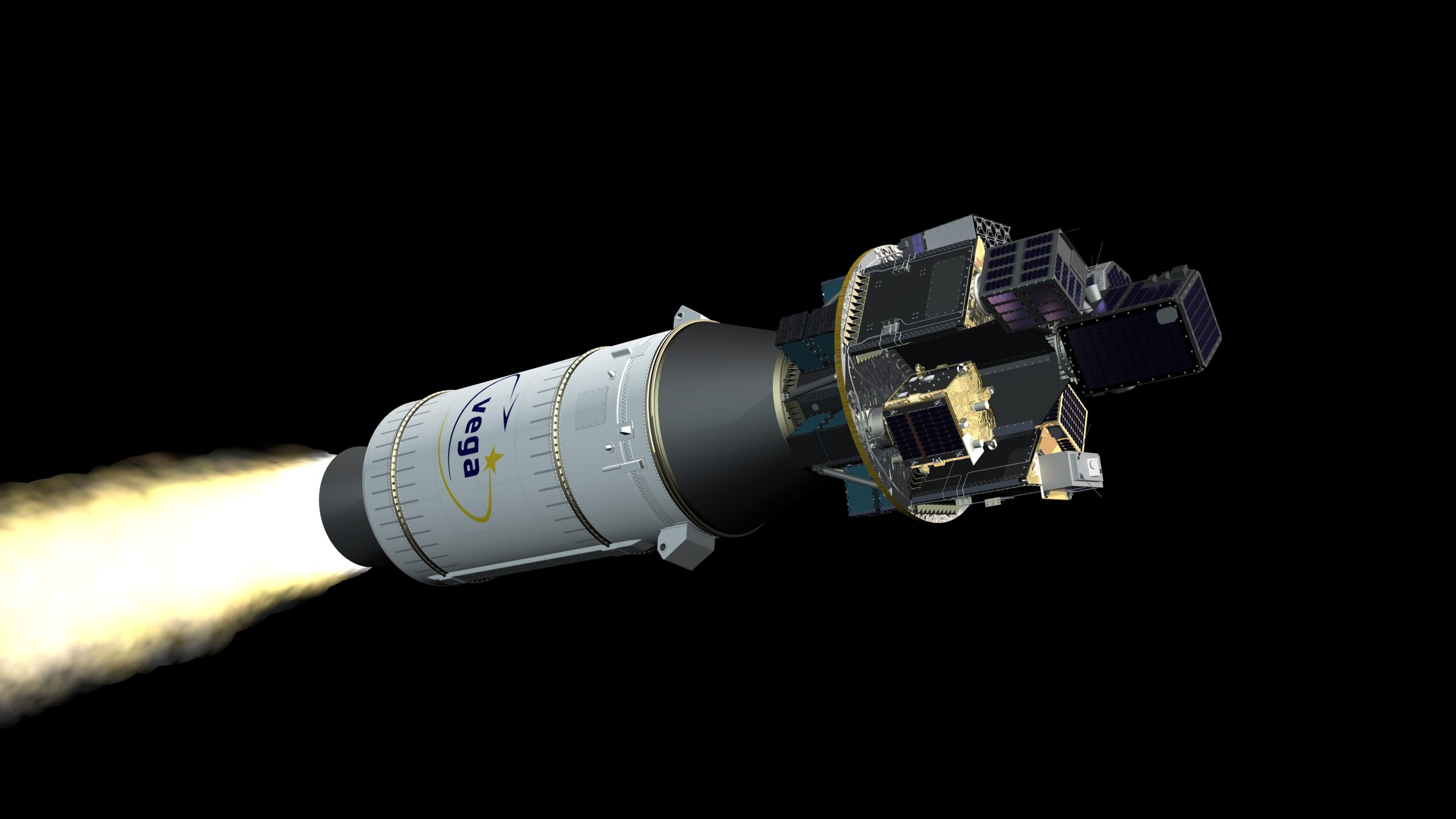A maiden flight by the book for Vega-C. The European carrier rocket, designed and manufactured in Italy, departed on July 13th, at 3:13 PM Italian time, from the ESA space port of Kourou, French Guyana. Aboard, there were the Italian Space Agency satellite for geodetic studies, LARES2, and six CubeSats, including Astrobio and Greencube, which were manufactured for the ASI by the National Institute for Astrophysics (INAF) and the Sapienza University of Rome. The ASI is the main contributor, in the context of the ESA, for the development of the Vega carrier rocket, manufactured by AVIO in the Italian plant of Colleferro. The mission lasted about two hours and fifteen minutes, from the liftoff to the moment of release of the payloads and the burn of the fourth stage of the carrier rocket, AVUM.
«With the success of the maiden flight of Vega-C – said the president of the ASI, Giorgio Saccoccia – Europe equips itself with the first of a new generation of more efficient and flexible carrier rockets, in order to best satisfy the needs of the commercial and institutional market for satellites, which is more and more challenging at the international level. At the same time, Italy, which is heading a European supply chain in the context of the ESA, for the Vega program, enhances even more its positioning in the field of space transport thanks, in particular, to its own industry guided by the first contractor of Vega-C, Avio. Finally, this is a double success for the ASI and for Italy, since they have put the LARES2 satellite into orbit. This is something that had been keenly awaited by the scientific community of fundamental physics, another sector of excellence of our country».
Vega-C increases the performance and competitiveness of its Vega predecessor, with an enhanced first (P120C, in common with Arian 6), second (Zefiro 40) and forth stage (AVUM+). Furthermore, the carrier rocket has a higher load capacity, ranging from 1.5 to nearly 2.2 tons in the polar orbit. The higher stage, AVUM+, has a higher liquid propellant capacity and is capable of putting into orbit, in different orbits, several useful loads in the same mission, depending on the market needs and to allow longer operating times in space and more extended missions.
The main useful load, LARES2, is an Italian Space Agency scientific satellite, manufactured by the National Institute for Nuclear Physics (INFN) on a project by the researchers from the Fermi Research Centre and the Sapienza University of Rome, for which the company OHB Italia produced the release system. The mission is aimed at measuring, with even more accuracy, the so-called frame-dragging effect, a space-time distortion caused by the rotation of a massive body, such as Earth, as provided by Einstein’s theory of general relativity. Its predecessor, LARES, was in 2012 the main useful load of the Vega maiden flight which, in turn, was the predecessor of Vega-C.
For its maiden flight, Vega-C released into orbit six CubeSats selected by the European Space Agency and manufactured by European universities and research centres, including the Italian Astrobio (manufactured by the INAF, the Sapienza University of Rome and the School of Aerospace Engineering of the Sapienza University of Rome), a CubeSat which hosts a miniaturized laboratory based on an innovative technology, which will autonomously conduct bioanalytical experiments in space, with a set of potential applications in planetary exploration missions, both human and robotic: GreenCube (manufactured by the Sapienza University of Rome), promoted and guided in the development by the ASI, and Alpha by ArcaDynamics. The three other CubeSats are: Trisat-R, from the University of Maribor (Slovenia), and MTCube-2 and Celesta, both from the University of Montpellier (France).
Videos:
1° - Launch replay

